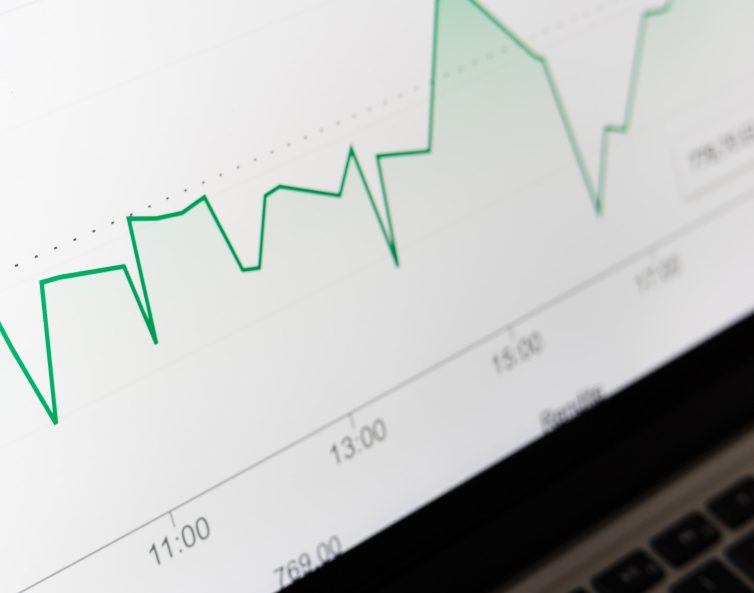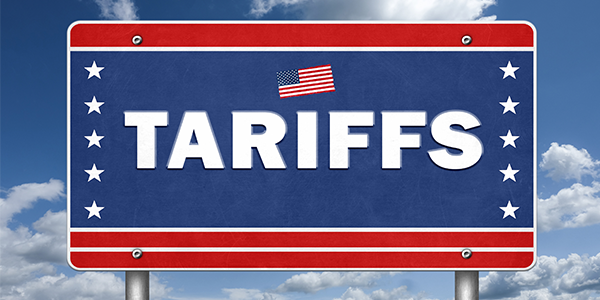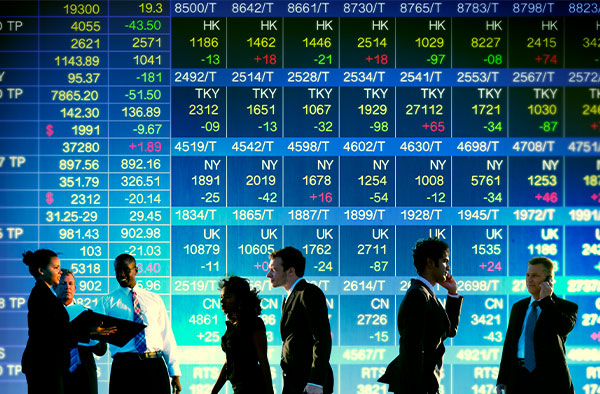

Net Asset Value as
of 04/24/2025:
Our Mutual Funds
Explore our no-load mutual funds, ranging from natural resources, emerging markets, and infrastructure, to precious metals and bond funds. We believe that we are specially qualified to be an integral part of your investment strategy.
Net Asset Values
| (NAV) As of 04/24/2025 | |||||
|---|---|---|---|---|---|
| Fund | Symbol | Close | Previous | Change | YTD |
| Global Luxury Goods Fund (USLUX) | USLUX | 19.84 | 19.42 |
0.42
|
-0.65%
|
| Gold and Precious Metals Fund (USERX) | USERX | 16.17 | 15.88 |
0.29
|
42.09%
|
| World Precious Minerals Fund (UNWPX) | UNWPX | 1.90 | 1.88 |
0.02
|
28.38%
|
| Global Resources Fund (PSPFX) | PSPFX | 3.80 | 3.74 |
0.06
|
3.83%
|
| Near-Term Tax Free Fund (NEARX) | NEARX | 2.09 | 2.09 |
0.00
|
0.59%
|
| U.S. Government Securities Ultra-Short Bond Fund (UGSDX) | UGSDX | 1.95 | 1.95 |
0.00
|
1.04%
|
Occasionally one or more of the above prices may be different than those reported elsewhere. With our global investments and the early deadline imposed by reporting services, occasionally a price is provided to the services before it has been fully verified. The prices above are always the most current and accurate available.
Past performance does not guarantee future results. Current performance may be higher or lower than the performance data quoted. The principal value and investment return of an investment will fluctuate so that your shares, when redeemed, may be worth more or less than their original cost.
Annualized Monthly Yields as of 03/31/2025
| Bond Funds | Inception Date | 30 Day SEC | Tax Equivalent (40.8% Tax Rate) | SEC Yield W/O Waivers |
|---|---|---|---|---|
| Near-Term Tax Free Fund (NEARX) | 12/04/1990 | 2.53% | 4.28% | 1.54% |
| U.S. Government Securities Ultra-Short Bond Fund (UGSDX) | 11/01/1990 | 3.89% | N/A | 3.08% |
Occasionally one or more of the above prices may be different than those reported elsewhere. With our global investments and the early deadline imposed by reporting services, occasionally a price is provided to the services before it has been fully verified. The prices above are always the most current and accurate available.
Performance data quoted above is historical. Past performance does not guarantee future results. Current performance may be higher or lower than the performance data quoted. The principal value and investment return of an investment will fluctuate so that your shares, when redeemed, may be worth more or less than their original cost.
Quarterly Yields as of 03/31/2025
| Bond Funds | Inception Date | 30-day SEC | Tax Equivalent (40.8% Tax Rate) | SEC Yield w/o Waiver & Reimbursement | Maturity |
|---|---|---|---|---|---|
| Near-Term Tax Free Fund NEARX | 12/04/1990 | 2.53% | 4.28% | 1.54% | 1.05 |
| U.S. Government Securities Ultra-Short Bond Fund (UGSDX) | 11/01/1990 | 3.89% | N/A | 3.08% | 0.24 |
Occasionally one or more of the above prices may be different than those reported elsewhere. With our global investments and the early deadline imposed by reporting services, occasionally a price is provided to the services before it has been fully verified. The prices above are always the most current and accurate available.
Performance data quoted above is historical. Past performance does not guarantee future results. Current performance may be higher or lower than the performance data quoted. The principal value and investment return of an investment will fluctuate so that your shares, when redeemed, may be worth more or less than their original cost.
Annualized Quarterly Returns as of 03/31/2025
| Fund | Inception Date | YTD | 1 Year | 5 Year | 10 Year | Since Inception | Gross Expense Ratio |
|---|---|---|---|---|---|---|---|
| U.S. Global Luxury Goods Fund (USLUX) | 10/17/1994 | -2.70% | 1.76% | 16.50% | 7.47% | 8.13% | 2.05% |
| Gold and Precious Metals Fund (USERX) | 7/1/1974 | 33.22% | 49.65% | 18.50% | 12.19% | 1.46% | 1.48% |
| World Precious Minerals Fund (UNWPX) | 11/27/1985 | 22.30% | 27.46% | 8.70% | 2.70% | 2.16% | 1.74% |
| Global Resources Fund (PSPFX) | 8/3/1983 | 2.46% | -1.36% | 13.79% | 1.27% | 3.06% | 1.69% |
| Near-Term Tax Free Fund (NEARX) | 11/1/1990 | 1.07% | 2.96% | 0.56% | 0.78% | 3.17% | 1.29% |
| U.S. Government Securities Ultra-Short Bond Fund (UGSDX) | 12/4/1990 | 1.04% | 4.32% | 1.47% | 1.12% | 2.44% | 1.17% |
Expense ratios as stated in the most recent prospectus.
The Adviser of the Gold & Precious Metals Fund has contractually limited total fund operating expenses (exclusive of acquired fund fees and expenses of, extraordinary expenses, taxes, brokerage commissions and interest, and advisory fee performance adjustments to not exceed 1.75% on an annualized basis through April 30, 2025. Total annual expenses after reimbursement of (0.02%) were 1.46%.
The Adviser of the Global Luxury Goods Fund has contractually limited total fund operating expenses (exclusive of acquired fund fees and expenses of extraordinary expenses, taxes, brokerage commissions and interest, and advisory fee performance adjustments to not exceed 1.75% on an annualized basis through April 30, 2025. Total annual expenses after reimbursement of (0.18%) were 1.87%.
The Adviser of the World Precious Minerals Fund has contractually limited total fund operating expenses (exclusive of acquired fund fees and expenses of extraordinary expenses, taxes, brokerage commissions and interest, and advisory fee performance adjustments) to not exceed 1.75% on an annualized basis through April 30, 2025. Total annual expenses after waiver or reimbursement of (0.27%) were 1.47%.
The Adviser of the Near-Term Tax Free Fund has contractually limited the total fund operating expenses (exclusive of acquired fund fees and expenses extraordinary expenses, taxes, brokerage commissions and interest) to not exceed 0.45% on an annualized basis through April 30, 2025. Total annual expenses after the waiver of (0.84%) were 0.45%. The fund’s yield calculation is based on the holdings’ yield to maturity for prior 30 days; distribution may differ.
The Adviser of the U.S. Government Securities Ultra-Short Bond Fund has voluntarily limited total fund operating expenses (exclusive of acquired fund fees and expenses, extraordinary expenses, taxes, brokerage commissions and interest) to not exceed 0.45%. With the voluntary expense waiver amount of (0.72%), total annual expenses after reimbursement were 0.45%. U.S. Global Investors, Inc. can modify or terminate the voluntary limit at any time, which may lower a fund’s yield or return. The fund’s yield calculation is based on the holdings’ yield to maturity for prior 30 days; distribution may differ.
The Adviser of the Global Resources Fund has contractually limited total fund operating expenses (exclusive of acquired fund fees and expenses of extraordinary expenses, taxes, brokerage commissions and interest, and advisory fee performance adjustments) to not exceed 1.75%. Total annual expenses after reimbursement of (0.22%) were 1.47%.
U.S. Global Investors, Inc. can modify or terminate the voluntary limits at any time, which may lower a fund’s yield or return.
Performance data quoted above is historical. Past performance is no guarantee of future results. Results reflect the reinvestment of dividends and other earnings. For a portion of periods, the fund had expense limitations, without which returns would have been lower. Current performance may be higher or lower than the performance data quoted. The principal value and investment return of an investment will fluctuate so that your shares, when redeemed, may be worth more or less than their original cost. Performance does not include the effect of any direct fees described in the fund’s prospectus which, if applicable, would lower your total returns. Performance quoted for periods of one year or less is cumulative and not annualized. Obtain performance data current to the most recent month-end at www.usfunds.com or 1-800-US-FUNDS. High double-digit returns are attributable, in part, to unusually favorable market conditions and may not be repeated or consistently achieved in the future.
Month End Average Annual Total Returns as of 03/31/2025
| Fund | Inception Date | One Month Return | YTD | 1 Year | 5 Year | 10 Year | Since Inception | Gross Expense Ratio |
|---|---|---|---|---|---|---|---|---|
| USGI Global Luxury Goods Fund (USLUX) | 10/17/1994 | -7.56% | -2.70% | 1.76% | 16.50% | 7.47% | 8.13% | 2.05% |
| Global Resources Fund (PSPFX) | 8/3/1983 | 3.59% | 2.46% | -1.36% | 13.79% | 1.27% | 3.06% | 1.69% |
| Gold and Precious Metals Fund (USERX) | 7/1/1974 | 16.89% | 33.22% | 49.65% | 18.50% | 12.19% | 1.46% | 1.48% |
| Near-Term Tax Free Fund (NEARX) | 12/4/1990 | 0.21% | 1.07% | 2.96% | 0.56% | 0.78% | 3.17% | 1.29% |
| U.S. Government Securities Ultra-Short Bond Fund (UGSDX) | 11/1/1990 | 0.35% | 1.04% | 4.32% | 1.47% | 1.12% | 2.44% | 1.17% |
| World Precious Minerals Fund (UNWPX) | 11/27/1985 | 10.37% | 22.30% | 27.46% | 8.70% | 2.70% | 2.16% | 1.74% |
Expense ratios as stated in the most recent prospectus.
The Adviser of the Gold & Precious Metals Fund has contractually limited total fund operating expenses (exclusive of acquired fund fees and expenses of, extraordinary expenses, taxes, brokerage commissions and interest, and advisory fee performance adjustments to not exceed 1.75% on an annualized basis through April 30, 2025. Total annual expenses after reimbursement of (0.02%) were 1.46%.
The Adviser of the Global Luxury Goods Fund has contractually limited total fund operating expenses (exclusive of acquired fund fees and expenses of extraordinary expenses, taxes, brokerage commissions and interest, and advisory fee performance adjustments to not exceed 1.75% on an annualized basis through April 30, 2025. Total annual expenses after reimbursement of (0.18%) were 1.87%.
The Adviser of the World Precious Minerals Fund has contractually limited total fund operating expenses (exclusive of acquired fund fees and expenses of extraordinary expenses, taxes, brokerage commissions and interest, and advisory fee performance adjustments) to not exceed 1.75% on an annualized basis through April 30, 2025. Total annual expenses after waiver or reimbursement of (0.27%) were 1.47%.
The Adviser of the Near-Term Tax Free Fund has contractually limited the total fund operating expenses (exclusive of acquired fund fees and expenses extraordinary expenses, taxes, brokerage commissions and interest) to not exceed 0.45% on an annualized basis through April 30, 2025. Total annual expenses after the waiver of (0.84%) were 0.45%. The fund’s yield calculation is based on the holdings’ yield to maturity for prior 30 days; distribution may differ.
The Adviser of the U.S. Government Securities Ultra-Short Bond Fund has voluntarily limited total fund operating expenses (exclusive of acquired fund fees and expenses, extraordinary expenses, taxes, brokerage commissions and interest) to not exceed 0.45%. With the voluntary expense waiver amount of (0.72%), total annual expenses after reimbursement were 0.45%. U.S. Global Investors, Inc. can modify or terminate the voluntary limit at any time, which may lower a fund’s yield or return. The fund’s yield calculation is based on the holdings’ yield to maturity for prior 30 days; distribution may differ.
The Adviser of the Global Resources Fund has contractually limited total fund operating expenses (exclusive of acquired fund fees and expenses of extraordinary expenses, taxes, brokerage commissions and interest, and advisory fee performance adjustments) to not exceed 1.75%. Total annual expenses after reimbursement of (0.22%) were 1.47%.
U.S. Global Investors, Inc. can modify or terminate the voluntary limits at any time, which may lower a fund’s yield or return.
Performance data quoted above is historical. Past performance is no guarantee of future results. Results reflect the reinvestment of dividends and other earnings. For a portion of periods, the fund had expense limitations, without which returns would have been lower. Current performance may be higher or lower than the performance data quoted. The principal value and investment return of an investment will fluctuate so that your shares, when redeemed, may be worth more or less than their original cost. Performance does not include the effect of any direct fees described in the fund’s prospectus which, if applicable, would lower your total returns. Performance quoted for periods of one year or less is cumulative and not annualized. Obtain performance data current to the most recent month-end at www.usfunds.com or 1-800-US-FUNDS. High double-digit returns are attributable, in part, to unusually favorable market conditions and may not be repeated or consistently achieved in the future.
| Fund | Date | Dividend/Distribution Per Share | Reinvest Price Per Share |
|---|---|---|---|
| Near-Term Tax Free Fund | 03/31/25 | $ 0.004313 | $2.10 |
| U.S. Government Securities Ultra-Short Bond Fund | 03/31/25 | $ 0.006793 | $1.95 |
The Fund’s closing Net Asset Value (NAV) on the ex-dividend date will be reduced by the amount of the distribution. There is no guarantee that the fund will continue to distribute income.
Past performance does not guarantee future results. Current performance may be higher or lower than the performance data quoted. The principal value and investment return of an investment will fluctuate so that your shares, when redeemed, may be worth more or less than their original cost.
Global Luxury Goods Fund (USLUX)
Fact SheetHow to Invest Request Info Download Prospectus
About The Global Luxury Goods Fund
The Global Luxury Goods Fund provides investors access to companies around the world that are involved in the design, manufacture and sale of products and services that are not considered to be essential but are highly desired within a culture or society.
Investments in luxury goods companies may expose the fund to consumer discretionary industries. These include but are not limited to apparel, automotive, home and office products, leisure products, recreation facilities, retail discretionary, travel and more.
Fund Objective
The Global Luxury Goods Fund’s primary objective is to seek long-term capital appreciation.
Fund Strategy
Under normal market conditions, the Global Luxury Goods Fund will invest at least 80 percent of its net assets in securities of companies producing, processing, distributing, and manufacturing luxury products, services or equipment. The securities in which the fund may invest include common stocks, preferred stocks, convertible securities, rights and warrants, exchange-traded funds (“ETFs”) that represent interests in, or related to, luxury goods companies, and depository receipts (American Depository Receipts (ADRs) and Global Depository Receipts (GDRs).
The fund’s benchmark is the S&P Composite 1500 Index.
The fund changed its name and investment strategy on May 1, 2020, and prior to that date, the performance shown reflects the strategy of the Holmes Macro Trends Fund (MEGAX). Prior to May 1, 2020, the fund invested in a diversified portfolio of equity and equity-related securities of companies in the S&P Composite 1500 Index, with a focus on companies achieving high return on invested capital metrics and an emphasis on mid-capitalization companies. Different investment strategies may lead to different performance results.
The S&P Global Luxury Index is comprised of 80 of the largest publicly-traded companies engaged in the production or distribution of luxury goods or the provision of luxury services that meet specific investibility requirements.
Companies in the consumer discretionary sector are subject to risks associated with fluctuations in the performance of domestic and international economies, interest rate changes, increased competition and consumer confidence. The performance of such companies may also be affected by factors relating to levels of disposable household income, reduced consumer spending, changing demographics and consumer tastes, among others.
The Global Luxury Goods Fund lost 2.7% in the first quarter of 2025, surpassing its benchmark, the S&P 1500 Composite Index, which declined by 4.49%. Additionally, the fund outperformed the S&P Global Luxury Index, which lost 6.94%. See complete fund performance here.
The performance data quoted represents past performance. Past performance does not guarantee future results. Current performance may be higher or lower than the performance data quoted. The principal value and investment return of an investment will fluctuate so that your shares, when redeemed, may be worth more or less than their original cost.
Strengths
- The fund’s performance relative to the S&P 1500 Index was positively impacted by its exposure to materials, particularly gold producers and royalty companies. According to the fund’s investment strategy, under favorable market conditions, the luxury fund aims to allocate around 10% of its holdings to this sector. Notably, gold prices hit a record high in the first quarter, exceeding $3,000 per ounce.
- The fund’s small exposure to the information technology stocks had the second most positive effect on the fund’s performance relative to the index. While the information technology sector, a heavily weighted component of the S&P 1500 Index (accounting for nearly 40% of the index), dropped by more than 10%, the fund maintained a small position in Apple shares, which declined by 5.85% in the first quarter.
- The strongest contributor to the fund’s performance was Cie Financière Richemont, the Swiss manufacturer of luxury retail goods. The company added a positive 0.80% to the fund’s overall return. Its shares saw a significant surge in mid-January, following the announcement of a 10% increase in sales for the holiday quarter, totaling €6.2 billion. This growth was primarily driven by strong performances in its Jewelry segment, which saw a 14% increase in revenue, and its Fashion & Accessories division, which grew by 11%.
Weaknesses
- The fund’s stock selection in the consumer staples sector had the most negative effect on its performance compared to the S&P 1500 Index. In line with its investment objective, the fund invested in luxury brands such as Constellation Brands, Kering, Remy Cointreau and Estee Lauder, all of which underperformed the broader market. Constellation Brands and Kering saw declines of around 16%, Remy dropped 22%, and Estee Lauder fell by 11.5%, while the broader index decreased by just 4.49%.
- The fund’s stock selections within the financial sector—particularly its overweight position in alternative asset managers focused on private equity, credit and real estate—had the second most negative impact on performance relative to the index. Shares of Carlyle Group and Apollo Global Management each declined approximately 15% in the first quarter, following a period of strong gains last year.
- The largest detractor from the fund’s performance was Tesla, which negatively impacted overall performance by 1.4%. Shares dropped by 36.0% in the first quarter due to a decline in vehicle deliveries, falling short of expectations. The drop was driven by production delays, increased competition and backlash over Elon Musk’s political involvement.
Outlook
In the first quarter, the luxury sector experienced a market correction, resulting in a clear division between strong and weak performers. Companies with greater exposure to affluent consumers—such as Compagnie Financière Richemont, Hermès and Moncler—outperformed, while those catering to less affluent demographics lagged behind. Some firms have already faced downward revisions to their profit forecasts and further earnings downgrades are anticipated in the coming months.
Global sales of personal luxury goods are projected to decline in 2025 for the first time since the Great Recession, according to a study by Bain consultancy. Sales of luxury goods are forecast to drop by 2% to 363 billion euros ($385 billion) this year, from an expected 369 billion euros in 2024, due to steep price increases imposed by brands and global turmoil, Bain said. This analysis was conducted prior to Trump’s announcement of tariffs, which include a 10% base tax on all U.S. imports and targeted reciprocal tariffs ranging from 11% to 50% on 57 specific countries. Several nations have already responded with reciprocal tariffs, escalating the trade war. While the tariffs were anticipated, their scale exceeded expectations, driving global equities lower in April. The situation could deteriorate further if the trade conflict deepens.
Super luxury brands are generally better positioned to withstand the impact of a tariff war compared to most other retailers, primarily due to their significantly higher profit margins, which provide greater flexibility to absorb increased costs. According to analysts at UBS, the average gross margin for these brands—defined as the difference between the purchase and selling price of goods—is approximately 70%. A major challenge for luxury brands may arise from steep tariffs imposed on key manufacturing countries, including 46% on Vietnam, 49% on Cambodia and 37% on Bangladesh, where many apparel, furniture and footwear companies have shifted their production.
The S&P 1500 Composite is a broad-based capitalization-weighted index of 1500 U.S. companies and is comprised of the S&P 400, S&P 500, and the S&P 600. The S&P Global Luxury Index measures the performance of 80 companies engaged in the production, distribution, or provision of luxury goods and services drawn from the S&P Global BMI.
Fund portfolios are actively managed, and holdings may change daily. Holdings are reported as of the most recent quarter-end. Holdings in the Global Luxury Goods Fund as a percentage of net assets as of 3/31/2025: Apple Inc. 2.57%, Cie Financière Richemont SA 3.84%, Constellation Brands Inc. 0.69%, Kering SA 1.26%, Remy Cointreau SA 0.56%, The Estee Lauder Cos. Inc. 1.52%, The Carlyle Group Inc. 1.55%, Apollo Global Management Inc. 0.00%, Tesla Inc. 4.02%, Hermes International SCA 8.01%, Moncler SpA 0.96%,
Standard Disclosure
Please consider carefully a fund’s investment objectives, risks, charges, and expenses. For this and other important information, obtain a fund prospectus by visiting www.usfunds.com or by calling 1-800-US-FUNDS (1-800-873-8637). Read it carefully before investing. Foreside Fund Services, LLC, Distributor. U.S. Global Investors is the investment adviser.
Stock markets can be volatile and share prices can fluctuate in response to sector-related and other risks as described in the fund prospectus.
All opinions expressed and data provided are subject to change without notice. Some of these opinions may not be appropriate to every investor.
Top 10 Equity and Debt Holdings as of 03-31-2025
| Holding | Percentage |
|---|---|
| Hermes International | 8.01% |
| Ferrari NV | 5.79% |
| Mercedes-Benz Group AG | 4.28% |
| Tesla, Inc. | 4.02% |
| LVMH Moet Hennessy Louis Vuitton SE | 3.99% |
| Volkswagen AG | 3.85% |
| Cie Financiere Richemont SA | 3.84% |
| adidas AG | 3.45% |
| The Goldman Sachs Group, Inc. | 3.22% |
| Carnival Corp. | 3.00% |
Industry Breakdown as of 03-31-2025
| Sector | Percentage |
|---|---|
| Consumer Discretionary | 52.70% |
| Consumer Staples | 14.37% |
| Financial | 13.10% |
| Materials | 11.86% |
| Cash Equivalents | 3.81% |
| Information Technology | 2.59% |
| Communication Services | 1.50% |
| Energy | 0.07% |
Regional Breakdown as of 03-31-2025
| Region | Percentage |
|---|---|
| United States | 36.47% |
| France | 17.57% |
| Germany | 14.18% |
| Italy | 8.17% |
| Canada | 8.04% |
| Switzerland | 4.35% |
| Other | 11.22% |
Growth of $10,000 Over 10 Years as of 03/31/2025
The chart illustrates the performance of a hypothetical $10,000 investment made in the fund during the depicted time frame. Figures include reinvestment of capital gains and dividends, but the performance does not include the effect of any direct fees described in the fund’s prospectus (e.g., short-term trading fees) which, if applicable, would lower your total returns.
Month End Average Annual Total Returns as of 03/31/2025
| YTD | 1 Year | 5 Year | 10 Year | Since Inception | Gross Expense Ratio |
| -2.70% | 1.76% | 16.50% | 7.47% | 8.13% | 2.05% |
Quarter End Average Annual Total Returns as of 03/31/2025
| YTD | 1 Year | 5 Year | 10 Year | Since Inception | Gross Expense Ratio |
| -2.70% | 1.76% | 16.50% | 7.47% | 8.13% | 2.05% |
Expense ratio as stated in the most recent prospectus.
The Adviser of the Global Luxury Goods Fund has contractually limited total fund operating expenses (exclusive of acquired fund fees and expenses of extraordinary expenses, taxes, brokerage commissions and interest, and advisory fee performance adjustments to not exceed 1.75% on an annualized basis through April 30, 2025. Total annual expenses after reimbursement of (0.18%) were 1.87%.
U.S. Global Investors, Inc. can modify or terminate the voluntary limits at any time, which may lower a fund’s yield or return.
Performance data quoted above is historical. Past performance is no guarantee of future results. Results reflect the reinvestment of dividends and other earnings. For a portion of periods, the fund had expense limitations, without which returns would have been lower. Current performance may be higher or lower than the performance data quoted. The principal value and investment return of an investment will fluctuate so that your shares, when redeemed, may be worth more or less than their original cost. Performance does not include the effect of any direct fees described in the fund’s prospectus which, if applicable, would lower your total returns. Performance quoted for periods of one year or less is cumulative and not annualized. Obtain performance data current to the most recent month-end at www.usfunds.com or 1-800-US-FUNDS. High double-digit returns are attributable, in part, to unusually favorable market conditions and may not be repeated or consistently achieved in the future.
Gold and Precious Metals Fund (USERX)
Fact SheetHow to Invest Request Info Download Prospectus
About the Gold and Precious Metals Fund
The Gold and Precious Metals Fund is the first no-load gold fund in the U.S. We have a history as pioneers in portfolio management in this specialized sector. Our team brings valuable background in geology and mining finance, important to understanding the technical side of the business. The fund focuses on producers, companies currently pulling gold or other precious minerals out of the ground. These companies, often called “seniors,” generally have the largest market caps in the mining sector.
Fund Objective
The Gold and Precious Metals Fund seeks capital appreciation while protecting against inflation and monetary instability. The fund also pursues current income as a secondary objective.
Fund Strategy
Under normal market conditions, the Gold and Precious Metals Fund will invest at least 80 percent of its net assets in equity securities of companies predominately involved in the mining, fabrication, processing, marketing, or distribution of metals including gold, silver, platinum group, palladium and diamonds. Gold companies include mining companies that exploit gold deposits that are supported by by-products and co-products such as copper, silver, lead and zinc, and also have diversified mining companies which produce a meaningful amount of gold. The fund focuses on selecting companies with established producing mines. The fund’s benchmark is the FTSE Gold Mines Index. Read more about U.S. Global Investors’ investment process.
The FTSE Gold Mines Index Series encompasses all gold mining companies that have a sustainable and attributable gold production of at least 300,000 ounces a year, and that derive 75% or more of their revenue from mined gold.
The Gold and Precious Metals Fund rose 33.22% in 2024, underperforming its secondary benchmark, the FTSE Gold Mines Index, which gained 37.78% on a total return basis with its higher exposure to South African-based gold miners. Our primary equity benchmark, the S&P 500 Index, fell 4.27%, which we outperformed. See complete fund performance here.
The performance data quoted represents past performance. Past performance does not guarantee future results. Current performance may be higher or lower than the performance data quoted. The principal value and investment return of an investment will fluctuate so that your shares, when redeemed, may be worth more or less than their original cost.
While focusing on established, gold-producing companies, USERX owns gold mining companies in the mid-tier and junior mining sector, as these stocks tend to offer better growth prospects, while the FTSE Gold Mines Index is comprised of the largest 24 gold miners.
Strengths
- Silver led all precious metals in Q1 2025, rising 17.11%. Driven by expectations of import tariffs under a new presidential administration, silver outperformed as front-month Comex silver futures traded at a premium to London spot prices. This dynamic attracted algorithmic traders and hedge funds while raising concerns about a potential market squeeze due to declining London stockpiles.
- The top three dollar-contributing stock decisions were: overweighting Catalyst Metals, underweighting Barrick Gold and underweighting Newmont. Catalyst delivered a breakout performance following the strategic sale of its Henty Gold operation, unlocking significant value and expanding its mineral footprint in Western Australia. Barrick continued facing jurisdictional challenges in Mali as of February—risks we intentionally avoided. Newmont also experienced operational headwinds that we chose to sidestep.
- Gold achieved fresh all-time highs 18 times in Q1 2025, driven by escalating geopolitical tensions, U.S. tariff announcements and strong safe-haven demand. The metal surged 18% for the quarter—its best performance since 1986—surpassing the $3,000/oz threshold and reaching a record $3,127/oz on March 31.
Weaknesses
- Palladium was the weakest-performing precious metal in Q1, though still up 8.95%. Precious metals ETFs added 2,509 troy ounces of palladium during the quarter. Meanwhile, Impala Platinum is considering an accelerated closure of its Lac des Iles mine in Canada due to weak prices. CEO Nico Muller described a wind-down as “the most economically effective” option amid a 43% decline in profits.
- The bottom three dollar-contributing stock decisions were: underweighting AngloGold Ashanti, underweighting Gold Fields and overweighting Aya Gold & Silver. AngloGold Ashanti reported a $1 billion profit in 2024, supported by a 24% increase in average realized gold prices and a ninefold rise in free cash flow (FCF), alongside a new dividend policy targeting 50% of free cash flow. Gold Fields’ $2.1 billion bid for Gold Road Resources was rejected as “opportunistic”; Gold Road countered with an offer to acquire Gold Fields’ 50% stake in their Gruyere JV, which Gold Fields also declined amid rising prices and operational challenges. Aya Gold & Silver shares fell up to 15% after a Q4 adjusted loss of $0.23 per share and revenue of $9.34 million, both missing estimates, while the company announced a strategic shift toward open-pit mining in Morocco.
- Gold miners outperformed bullion with nearly 2:1 leverage in Q1 2025, while silver miners underperformed due to softer industrial demand and elevated energy costs. This divergence underscores gold’s role as a macroeconomic hedge versus silver’s hybrid monetary-industrial profile.
Outlook for Gold and Precious Metals
Bank of America reports that China’s gold ETFs saw consistent inflows, averaging $253 million per month, driven by weak equities, currency depreciation, and declining bond yields. Holdings in Chinese gold ETFs have reached all-time highs. The World Gold Council (WGC) notes that global physically backed gold ETFs experienced $9.4 billion in inflows in February—the strongest month since March 2022. North America saw a sharp reversal with one of its strongest inflow months on record, while demand remained robust in Asia and narrowed in Europe.
Central bank demand for gold remains strong, with net purchases totaling 2,575 tons over the past five years. Key buyers include:
- China: +412 tons (+22%)
- Türkiye: +359 tons (+141%)
- Poland: +299 tons (+232%)
- India: +280 tons (+47%)
- Russia: +223 tons (+11%)
Despite macroeconomic headwinds such as a strong U.S. dollar and weak industrial activity, silver prices have remained near $30/oz for the past nine months. Bank of America attributes this to persistent silver market deficits and limited mine production growth. Silver stocks in London vaults fell by 71 million ounces in January to 756 million ounces—the lowest level since the LBMA began reporting holdings in 2016, per Morgan Stanley.
Silver has outpaced gold by 10% since mid-February, though the gold/silver ratio remains elevated above 80:1, well above the 10-year average. A return to the 2020 ratio peak of 65:1 would imply a silver price above $37/oz, suggesting further upside potential, according to RBC. The Silver Institute forecasts a significant supply deficit in 2025, with industrial demand (projected at 700 million ounces) as the primary driver. Total global demand is expected to remain stable at 1.2 billion ounces, while global supply is projected to grow 3% to 1.05 billion ounces, supported by a 2% increase in mine output to 844 million ounces.
Morgan Stanley views platinum as the key driver for a sector rebound, citing sustained market deficits. In contrast, palladium and rhodium are expected to lag, weighed down by the rise of battery electric vehicles (BEVs), structural changes in China, and subdued auto production forecasts.
Gold’s role as a safe-haven asset remains clear amid high inflation, economic uncertainty and geopolitical instability. Its rise above $3,100/oz underscores its enduring value relative to fiat currencies and credit-dependent assets. Meanwhile, Bitcoin, often dubbed “digital gold,” declined 12.5% in Q1 2025—its worst quarter in seven years. Despite its capped supply and decentralized nature, Bitcoin’s volatility and sensitivity to macroeconomic shifts—particularly Federal Reserve policy—have hindered its inflation-hedging appeal. The contrast between gold’s resilience and Bitcoin’s recent struggles highlights their divergent roles in today’s uncertain environment.
The FTSE Gold Mines Index encompasses all gold mining companies that have a sustainable and attributable gold production of at least 300,000 ounces a year, and that derive 75% or more of their revenue from mined gold. The S&P 500 Index is a market-capitalization-weighted index of 500 leading publicly traded companies in the US.
Fund portfolios are actively managed, and holdings may change daily. Holdings are reported as of the most recent quarter-end. Holdings in the Gold and Precious Metals Fund as a percent of net assets as of 3/31/2025: Catalyst Metals Ltd. 4.03%, Barrick Gold Corp. 0.21%, Newmont Corp. 0.20%, Impala Platinum Holdings Ltd. 1.27%, AngloGold Ashanti Ltd. 1.64%, Gold Fields Ltd. 1.06%, Aya Gold & Silver Inc. 3.58%, Gold Road Resources Ltd. 0.00%.
Standard Disclosure
Please consider carefully a fund’s investment objectives, risks, charges and expenses. For this and other important information, obtain a fund prospectus by visiting www.usfunds.com or by calling 1-800-US-FUNDS (1-800-873-8637). Read it carefully before investing. Foreside Fund Services, LLC, Distributor. U.S. Global Investors is the investment adviser.
All opinions expressed and data provided are subject to change without notice. Some of these opinions may not be appropriate to every investor.
Gold, precious metals, and precious minerals funds may be susceptible to adverse economic, political or regulatory developments due to concentrating in a single theme. The prices of gold, precious metals, and precious minerals are subject to substantial price fluctuations over short periods of time and may be affected by unpredicted international monetary and political policies. We suggest investing no more than 5% to 10% of your portfolio in these sectors.
Top 10 Equity Holdings as of 03-31-2025
| Holding | Percentage |
|---|---|
| K92 Mining, Inc. | 9.56% |
| Alamos Gold, Inc. | 5.14% |
| Catalyst Metals, Ltd. | 4.04% |
| Mineros SA | 4.02% |
| Torex Gold Resources, Inc. | 3.68% |
| Aya Gold & Silver, Inc. | 3.59% |
| Vox Royalty Corp. | 3.05% |
| Aris Gold Corp. | 2.92% |
| Westgold Resources, Ltd. | 2.68% |
| Agnico Eagle Mines, Ltd. | 2.40% |
Industry Breakdown as of 03-31-2025
| Sector | Percentage |
|---|---|
| Gold, Precious Metals and Minerals | 92.61% |
| Cash Equivalents | 6.63% |
| Other | 0.76% |
Regional Breakdown as of 03-31-2025
| Region | Percentage |
|---|---|
| Canada | 57.06% |
| Australia | 16.79% |
| United States | 8.28% |
| South Africa | 4.48% |
| Other | 6.76% |
| Cash Equivalents | 6.63% |
Growth of $10,000 Over 10 Years as of 03/31/2025
The chart illustrates the performance of a hypothetical $10,000 investment made in the fund during the depicted time frame. Figures include reinvestment of capital gains and dividends, but the performance does not include the effect of any direct fees described in the fund’s prospectus (e.g., short-term trading fees) which, if applicable, would lower your total returns.
Month End Average Annual Total Returns as of 03/31/2025
| YTD | 1 Year | 5 Year | 10 Year | Since Inception | Gross Expense Ratio |
| 33.22% | 49.65% | 18.50% | 12.19% | 1.46% | 1.48% |
Quarter End Average Annual Total Returns as of 03/31/2025
| YTD | 1 Year | 5 Year | 10 Year | Since Inception | Gross Expense Ratio |
| 33.22% | 49.65% | 18.50% | 12.19% | 1.46% | 1.48% |
Expense ratio as stated in the most recent prospectus.
The Adviser of the Gold & Precious Metals Fund has contractually limited total fund operating expenses (exclusive of acquired fund fees and expenses of, extraordinary expenses, taxes, brokerage commissions and interest, and advisory fee performance adjustments to not exceed 1.75% on an annualized basis through April 30, 2025. Total annual expenses after reimbursement of (0.02%) were 1.46%.
Performance data quoted above is historical. Past performance is no guarantee of future results. Results reflect the reinvestment of dividends and other earnings. For a portion of periods, the fund had expense limitations, without which returns would have been lower. Current performance may be higher or lower than the performance data quoted. The principal value and investment return of an investment will fluctuate so that your shares, when redeemed, may be worth more or less than their original cost. Performance does not include the effect of any direct fees described in the fund’s prospectus which, if applicable, would lower your total returns. Performance quoted for periods of one year or less is cumulative and not annualized. Obtain performance data current to the most recent month-end at www.usfunds.com or 1-800-US-FUNDS. High double-digit returns are attributable, in part, to unusually favorable market conditions and may not be repeated or consistently achieved in the future.
World Precious Minerals Fund (UNWPX)
Fact SheetHow to Invest Request Info Download Prospectus
About the World Precious Minerals Fund
The World Precious Minerals Fund complements our Gold and Precious Metals Fund by giving investors increased exposure to junior and intermediate mining companies for added growth potential. With a high level of expertise in this specialized sector, our portfolio management team includes professionals with experience in geology, mineral resources and mining finance.
Fund Objective
The World Precious Minerals Fund seeks long-term growth of capital while providing protection against inflation and monetary instability.
Fund Strategy
Under normal market conditions, the World Precious Minerals Fund will invest at least 80% of its net assets in common stock, preferred stock, convertible securities, rights and warrants, and depository receipts of companies principally engaged in the exploration for, or mining and processing of, precious minerals such as gold, silver, platinum group, palladium and diamonds. The fund focuses on selecting junior and intermediate exploration companies from around the world.
The fund’s benchmark is the NYSE Arca Gold Miners Index.
Read more about U.S. Global Investors’ investment process
The NYSE Arca Gold Miners Index is a modified market capitalization weighted index comprised of publicly traded companies involved primarily in the mining for gold and silver. The index benchmark value was 500.0 at the close of trading on December 20, 2002.
For the first quarter ending March 31, 2025, the World Precious Minerals Fund rose 22.30%, underperforming its secondary benchmark, the NYSE Arca Gold Miners Index, which gained 35.42% on a total return basis as the more senior gold mining companies were the biggest beneficiary this past quarter. See complete fund performance here.
The performance data quoted represents past performance. Past performance does not guarantee future results. Current performance may be higher or lower than the performance data quoted. The principal value and investment return of an investment will fluctuate so that your shares, when redeemed, may be worth more or less than their original cost.
Our primary equity benchmark, the S&P 500 Index fell 4.27%, which we outperformed. The S&P/TSX Venture Precious Metals & Minerals Index, which better reflects the mix of small-cap junior mining companies the fund typically invests in, returned 21.23%, which we slightly outperformed.
Strengths
- The strongest-performing precious metal for the first quarter was silver, up 17.11%. Fueled by expectations of import tariffs under a new presidential administration, silver outperformed other precious metals in Q1 2025 as front-month Comex silver futures traded at a premium over London spot prices. This attracted algorithmic traders and hedge funds while raising concerns about a potential market squeeze due to dwindling London stockpiles.
- Our top dollar-performing stock for the quarter was Omai Gold Mines, adding 102 basis points (bps) of performance. Omai Gold surged more than 80% in Q1 2025, driven by its robust Preliminary Economic Assessment (PEA) for Guyana’s Wenot Project. The stock outperformed peers on the strength of its updated Mineral Resource Estimate (4.3M oz Au) and brownfield development potential, which attracted investor confidence. With drilling expanding high-grade zones and gold prices stabilizing near record highs, Omai leveraged its low-cost, scalable project to deliver exceptional returns.
- Our next two top dollar-gaining stocks for the quarter were G2 Goldfields and Black Cat Syndicate, adding 89 bps and 82 bps of performance, respectively. G2 Goldfields soared over 60% in Q1 2025, fueled by its updated 3.1 million ounces of gold at Guyana’s OKO Project and a high-grade discovery, which expanded its district-scale potential.
Weaknesses
- Lynas Rare Earths, the largest non-Chinese producer, reported a net profit of just A$5.9 million ($3.74 million) for the six months ending December 31, 2024—a 92% year-over-year decline from A$39.54 million and far below the A$36.2 million consensus estimate. Plummeting rare earth prices (e.g., neodymium down ~50% from 2022 peaks), oversupply from China’s dominant state-owned producers, and high operational costs severely pressured margins. The decline highlights the sector’s vulnerability to geopolitical pressures and cyclical demand, as Western miners struggle to compete with China’s low-cost dominance despite global efforts to diversify supply chains.
- Our largest dollar-underperforming stock for the quarter was Radisson Mining Resources, detracting 225 bps from performance, with the share price down around 5% in the first quarter. While news flow outlined positive metallurgical results and the last of the 2024 drill season results were released, a toll milling agreement utilizing IAMGOLD’s mill facilities helped further de-risk the capital requirements to bring the O’Brien Mine back into production. We expect Radisson to resume its gains in 2025.
- The next two worst dollar-performing stock decisions were an allocation in Nano One Materials and an underweight in Gold Fields, detracting 221 bps and 129 bps, respectively. Nano One Materials, a Canadian lithium-ion battery technology firm, is positioned as the only Western alternative to China’s lithium batteries. In hindsight, we should have held more of Gold Fields, which surged over 60% in Q1 2025, driven by record-high gold prices and a bullish production outlook. The rally was further amplified by its strategic acquisition of Osisko Mining, expanding its footprint in Québec’s Tier-1 jurisdiction, and a 34% dividend increase, reflecting improved cash flow and renewed investor confidence in its operational turnaround.
Outlook for World Precious Minerals
There has been a sharp decline in new gold deposit discoveries over the past few decades. Between 1990 and 1999, gold discoveries averaged 18 per year. This number fell to 12 in the 2000s and then dropped further to just four per year on average in the 2010s. Between 2020 and 2023, there were only five major discoveries—despite increased exploration spending, according to Bank of America. According to Scotia, 2024 reserves are likely to be flat net of depletion, though resource levels are expected to increase. They forecast that gold price assumptions for reserve calculations will be higher than 2023 levels ($1,300–$1,400/oz), and likewise for resource pricing ($1,600–$1,800/oz). Overall, reserves are expected to remain flat versus 2023 after accounting for depletion.
Gold is up 80% since September 2022. While impressive, this lags behind the previous three gold bull markets of the past 25 years. Historically, the current rally is around the midpoint of prior gold cycles. Canaccord views gold equities as inexpensive relative to gold itself, with senior producers trading at 0.63 times their net asset value (NAV). According to RBC, junior gold valuations have started to rise with metal prices but remain depressed versus historical levels and previous peaks. They see significant value in the junior gold segment at current spot prices, with strong potential for re-rating as investor appetite increases for new projects offering better economics at higher metal prices.
The gold sector is currently sizzling with mergers and acquisitions (M&A) activity as miners aggressively consolidate to capitalize on record-high prices and renewed investor appetite for safe-haven assets. Catalyst Metals recently completed a A$47 million divestment of its Henty Mine—securing upfront cash, future gold-linked payments and a 19.9% stake in buyer Kaiser Reef—while freeing up capital to accelerate development of its high-grade Plutonic Belt projects. Meanwhile, Equinox Gold’s $1.8 billion bid for Calibre Mining (despite pushback from top shareholder VanEck) and Gold Fields’ rejected $2.1 billion offer for Gold Road Resources show that the hunger for scale is intensifying. With TD Securities and BMO noting that producers are “cashed up and hunting for synergies,” and S&P Global reporting that gold deals made up 70% of mining M&A value in 2024, the stage is set for a frenzy of high-stakes takeovers. Still, most of these transactions have occurred in the mid-tier space. Junior gold explorers and developers continue to face limited access to capital, indicating it is still early in this potential gold cycle.
The NYSE Arca Gold Miners Index is a modified market capitalization weighted index comprised of publicly traded companies involved primarily in the mining for gold and silver. The S&P 500 Index is a market-capitalization-weighted index of 500 leading publicly traded companies in the US. The S&P/TSX Venture Precious Metals & Minerals (Sub Industry) Index consists of all members of the S&P/TSX Venture Composite that are classified within the GICS precious metals & minerals sub-industry.
A basis point (bp) is a unit of measurement for percentage changes, representing 1/100th of 1% or 0.01%.
Fund portfolios are actively managed, and holdings may change daily. Holdings are reported as of the most recent quarter-end. Holdings in the World Precious Minerals Fund as a percentage of net assets as of 3/31/2025: Omai Gold Mines Corp. 3.22%, G2 Goldfields Inc. 4.66%, Black Cat Syndicate Ltd. 3.37%, Lynas Rare Earths Ltd. 0.00%, Radisson Mining Resources Inc. 3.97%, IAMGOLD Corp. 0.00%, Nano One Materials Corp. 2.75%, Gold Fields Ltd. 0.00%, Osisko Mining Inc. 0.00%, Catalyst Metals Ltd. 0.00%, Equinox Gold Corp. 0.00%, Calibre Mining Corp. 0.00%, Gold Road Resources Ltd. 0.00%.
Standard Disclosure
Please consider carefully a fund’s investment objectives, risks, charges and expenses. For this and other important information, obtain a fund prospectus by visiting www.usfunds.com or by calling 1-800-US-FUNDS (1-800-873-8637). Read it carefully before investing. Foreside Fund Services, LLC, Distributor. U.S. Global Investors is the investment adviser.
All opinions expressed and data provided are subject to change without notice. Some of these opinions may not be appropriate to every investor.
Gold, precious metals, and precious minerals funds may be susceptible to adverse economic, political or regulatory developments due to concentrating in a single theme. The prices of gold, precious metals, and precious minerals are subject to substantial price fluctuations over short periods of time and may be affected by unpredicted international monetary and political policies. We suggest investing no more than 5% to 10% of your portfolio in these sectors.
Top 10 Equity and Debt Holdings as of 03-31-2025
| Holding | Percentage |
|---|---|
| K92 Mining, Inc. | 8.21% |
| TriStar Gold, Inc. | 7.65% |
| G2 Goldfields, Inc. | 4.66% |
| Vizsla Silver Corp. | 4.37% |
| Radisson Mining Resources, Inc. | 3.94% |
| Black Cat Syndicate, Ltd. | 3.37% |
| Omai Gold Mines Corp. | 3.22% |
| Founders Metals, Inc. | 3.12% |
| Nano One Materials Corp. | 2.75% |
| Tolu Minerals, Inc. | 2.58% |
Industry Breakdown as of 03-31-2025
| Sector | Percentage |
|---|---|
| Gold, Precious Metals and Minerals | 91.08% |
| Other | 8.92% |
Regional Breakdown as of 03-31-2025
| Region | Percentage |
|---|---|
| Canada | 75.83% |
| United States | 9.49% |
| Australia | 8.40% |
| Other | 6.28% |
Growth of $10,000 Over 10 Years as of 03/31/2025
The chart illustrates the performance of a hypothetical $10,000 investment made in the fund during the depicted time frame. Figures include reinvestment of capital gains and dividends, but the performance does not include the effect of any direct fees described in the fund’s prospectus (e.g., short-term trading fees) which, if applicable, would lower your total returns.
Month End Average Annual Total Returns as of 03/31/2025
| YTD | 1 Year | 5 Year | 10 Year | Since Inception | Gross Expense Ratio |
| 22.30% | 27.46% | 8.70% | 2.70% | 2.16% | 1.74% |
Quarter End Average Annual Total Returns as of 03/31/2025
| YTD | 1 Year | 5 Year | 10 Year | Since Inception | Gross Expense Ratio |
| 22.30% | 27.46% | 8.70% | 2.70% | 2.16% | 1.74% |
Expense ratios as stated in the most recent prospectus.
The Adviser of the World Precious Minerals Fund has contractually limited total fund operating expenses (exclusive of acquired fund fees and expenses of extraordinary expenses, taxes, brokerage commissions and interest, and advisory fee performance adjustments) to not exceed 1.75% on an annualized basis through April 30, 2025. Total annual expenses after waiver or reimbursement of (0.27%) were 1.47%.
U.S. Global Investors, Inc. can modify or terminate the voluntary limits at any time, which may lower a fund’s yield or return.
Performance data quoted above is historical. Past performance is no guarantee of future results. Results reflect the reinvestment of dividends and other earnings. For a portion of periods, the fund had expense limitations, without which returns would have been lower. Current performance may be higher or lower than the performance data quoted. The principal value and investment return of an investment will fluctuate so that your shares, when redeemed, may be worth more or less than their original cost. Performance does not include the effect of any direct fees described in the fund’s prospectus which, if applicable, would lower your total returns. Performance quoted for periods of one year or less is cumulative and not annualized. Obtain performance data current to the most recent month-end at www.usfunds.com or 1-800-US-FUNDS. High double-digit returns are attributable, in part, to unusually favorable market conditions and may not be repeated or consistently achieved in the future.
Global Resources Fund (PSPFX)
Fact SheetHow to Invest Request Info Download Prospectus
About the Global Resources Fund
The Global Resources Fund takes a multi-faceted approach to the natural resources sector by investing in energy and basic materials. The fund invests in companies involved in the exploration, production and processing of petroleum, natural gas, coal, alternative energies, chemicals, mining, iron and steel, and paper and forest products, and can invest in any part of the world.
Fund Objective
The Global Resources Fund seeks long-term growth of capital while providing protection against inflation and monetary instability.
Fund Strategy
Under normal market conditions, the Global Resources Fund normally invests at least 80 percent of its net assets in the common stock, preferred stock, convertible securities, rights and warrants, and depository receipts of companies involved in the natural resources industries. The fund may invest without limitation in any of the various natural resources industries.
Read more about U.S. Global Investors’ investment process.
For the first quarter of 2025, the Global Resources Fund returned 2.46%, outperforming the S&P 500, the fund’s broad-based benchmark, which declined 4.27%. Our subindex, the S&P Global Natural Resources Index (Net Total Return), gained 6.93% for the quarter; thus, we underperformed. See complete fund performance here.
The performance data quoted represents past performance. Past performance does not guarantee future results. Current performance may be higher or lower than the performance data quoted. The principal value and investment return of an investment will fluctuate so that your shares, when redeemed, may be worth more or less than their original cost.
The Global Resources Fund invests in exploration and development companies and the junior mining and energy sector, unlike our benchmark, which is principally invested in large-cap natural resources companies with established revenue streams. As a result, there can be timing swings where money flows first to the most liquid names before investors move down-market.
Strengths
- The three strongest commodities for the quarter were natural gas, copper and coffee, up 30.47%, 24.01% and 20.61%, respectively. Natural gas prices surged in Q1 2025 due to geopolitical tensions from Ukraine halting Russian gas transit, compounded by cold-weather-driven demand and depleted storage levels. Copper prices jumped as U.S. tariff threats triggered preemptive stockpiling and a supply squeeze, with U.S. buyers driving a record $1,700-per-ton premium over global benchmarks, though prices later fell 10% in April amid China’s retaliatory tariffs and fears of global demand destruction. Coffee prices hit historic highs due to severe droughts in Brazil and Vietnam, compounded by labor shortages and Wall Street speculation, even as Starbucks’ 4% sales decline (less than expected) signaled weakening demand.
- The three best sector calls for the fund were an overweight position in precious metals (benefiting from gold’s rally), underweighting containers and packaging (hit by tariffs, illustrated by Packaging Corp of America’s missed earnings per share (EPS) and rising costs), and underweighting pulp and paper (also hit by tariffs, as shown by Suzano’s $1.17 billion net loss for the period—double loss estimates).
- The three best dollar-performing stock decisions were overweighting Montage Gold, K92 Mining and Collective Mining. These performances were driven by a gold rally and company-specific value creation: Montage Gold’s project milestones, Collective Mining’s exceptional drill results at Apollo and K92 Mining’s record gold production.
Weaknesses
- The three weakest commodities for the quarter were uranium, lithium carbonate and wheat, down 12.47%, 10.21% and 4.53%, respectively. Uranium prices fell sharply in Q1 2025—down as much as 40% from their peak—as diminished enthusiasm for artificial intelligence (AI) and data center expansion tempered demand expectations. Lithium carbonate declined due to weaker-than-expected electric vehicle (EV) sales growth, leading to oversupply and falling prices. Wheat prices dropped amid forecasts of abundant global harvests and easing supply chain bottlenecks, offsetting any upside from geopolitical tensions.
- The worst-performing sector calls for the fund were an underweight position in integrated oil (detracting 2.39% from performance as OPEC+ signaled it would extend production cuts amid a seasonal demand uptick), overweighting other metals/minerals (detracting 1.54% amid signs of slowing economic activity and Rio Tinto’s warning of weaker aluminum demand), and underweighting agricultural and chemicals (detracting 0.66% as Bayer shares plunged on a weak outlook for its crop science division, citing declining glyphosate prices and soybean oversupply).
- The three worst dollar-performing stock decisions were overweighting Encore, Ivanhoe Mines and underweighting Shell.
Outlook for Global Resources
Gold, natural gas, uranium and potentially coal are likely to generate better returns under current conditions, while crude oil, agricultural companies and copper face near-term obstacles. Gold has been the best-performing sector, and analysts expect that geopolitical tensions, concerns about government debt, and continued central bank buying will remain supportive. Natural gas, delivered globally as liquified natural gas (LNG), is becoming the primary fuel of choice for dispatchable electricity generation. While it burns cleaner than coal, coal continues to see demand in India and China to support growing power needs, keeping it investable. Uranium’s long-term demand is undeniable, though short-term oversupply and delayed U.S. utility purchases have kept prices muted in 2025.
Major crude oil companies could face swift price challenges if economic conditions soften and energy demand declines—particularly if tariffs slow global growth. In China, gasoline and diesel vehicles are rapidly losing market share to EVs, which are poised to overtake internal combustion vehicle sales in 2025, if not 2026. This is a major curtailment of China’s need to import crude oil for gasoline production. Agricultural commodity producers may see isolated strength (e.g., cocoa, coffee, due to 2024 weather disruptions), but broad categories like soybeans and grains may face pressure due to high inventory levels. International buyers impacted by tariffs have historically reduced purchases of U.S. agricultural products, such as soybeans and wheat.
Longer term, copper fundamentals remain strong thanks to the energy transition, though progress has slowed amid growing economic and tariff-related uncertainty. If interest rates drop, copper may regain momentum; however, higher rates may delay or shelve projects entirely.
The S&P Global Natural Resources Index includes 90 of the largest publicly traded companies in natural resources and commodities businesses that meet specific investability requirements, offering investors diversified, liquid and investable equity exposure across 3 primary commodity-related sectors: Agribusiness, Energy, and Metals & Mining. The S&P 500 Index, or Standard & Poor’s 500 Index, is a market-capitalization-weighted index of 500 leading publicly traded companies in the US.
Standard Disclosure
Please consider carefully a fund’s investment objectives, risks, charges and expenses. For this and other important information, obtain a fund prospectus by visiting www.usfunds.com or by calling 1-800-US-FUNDS (1-800-873-8637). Read it carefully before investing. Foreside Fund Services, LLC, Distributor. U.S. Global Investors is the investment adviser.
Fund portfolios are actively managed, and holdings may change daily. Holdings are reported as of the most recent quarter-end. Holdings in the Global Resources Fund as a percentage of net assets as of 3/31/2025: Starbucks Corp. 0.00%, Packaging Corporation of America 0.00%, Suzano S.A. 0.00%, Montage Gold Corp. 3.74%, K92 Mining Inc. 2.73%, Collective Mining Ltd. 1.68%, Rio Tinto Ltd. 0.00%, Encore Energy Corp. 0.39%, Ivanhoe Mines Ltd. 0.58%, Shell PLC 1.01%.
All opinions expressed and data provided are subject to change without notice. Some of these opinions may not be appropriate to every investor.
Foreign and emerging market investing involves special risks such as currency fluctuation and less public disclosure, as well as economic and political risk. Because the Global Resources Fund concentrates its investments in specific industries, the fund may be subject to greater risks and fluctuations than a portfolio representing a broader range of industries.
Top 10 Equity and Debt Holdings as of 03-31-2025
| Holding | Percentage |
|---|---|
| Abaxx Technologies, Inc. | 5.58% |
| Montage Gold Corp. | 3.74% |
| Cheniere Energy, Inc. | 3.18% |
| Aris Gold Corp. | 2.76% |
| K92 Mining, Inc. | 2.73% |
| Nutrien, Ltd. | 2.39% |
| Exxon Mobil Corp. | 2.29% |
| Torex Gold Resources, Inc. | 2.21% |
| Hudbay Minerals, Inc. | 1.98% |
| Vizsla Silver, Corp. | 1.96% |
Industry Breakdown as of 03-31-2025
| Sector | Percentage |
|---|---|
| Basic Materials | 50.83% |
| Energy | 24.14% |
| Cash Equivalents | 11.67% |
| Technology | 6.34% |
| Financial | 4.62% |
| Consumer Staples | 1.04% |
| Industrial | 0.96% |
| Communications | 0.20% |
| Funds | 0.20% |
Regional Breakdown as of 03-31-2025
| Region | Percentage |
|---|---|
| Canada | 49.91% |
| United States | 28.17% |
| Cash Equivalents | 11.67% |
| United Kingdom | 3.74% |
| Australia | 3.63% |
| Jersey | 1.21% |
| France | 0.71% |
| Other | 0.96% |
Growth of $10,000 Over 10 Years as of 03/31/2025
The chart illustrates the performance of a hypothetical $10,000 investment made in the fund during the depicted time frame. Figures include reinvestment of capital gains and dividends, but the performance does not include the effect of any direct fees described in the fund’s prospectus (e.g., short-term trading fees) which, if applicable, would lower your total returns.
Month End Average Annual Total Returns as of 03/31/2025
| YTD | 1 Year | 5 Year | 10 Year | Since Inception | Gross Expense Ratio |
| 2.46% | -1.36% | 13.79% | 1.27% | 3.06% | 1.69% |
Quarter End Average Annual Total Returns as of 03/31/2025
| YTD | 1 Year | 5 Year | 10 Year | Since Inception | Gross Expense Ratio |
| 2.46% | -1.36% | 13.79% | 1.27% | 3.06% | 1.69% |
Expense ratios as stated in the most recent prospectus.
The Adviser of the Global Resources Fund has contractually limited total fund operating expenses (exclusive of acquired fund fees and expenses of extraordinary expenses, taxes, brokerage commissions and interest, and advisory fee performance adjustments) to not exceed 1.75%. Total annual expenses after reimbursement of (0.22%) were 1.47%.
Performance data quoted above is historical. Past performance is no guarantee of future results. Results reflect the reinvestment of dividends and other earnings. For a portion of periods, the fund had expense limitations, without which returns would have been lower. Current performance may be higher or lower than the performance data quoted. The principal value and investment return of an investment will fluctuate so that your shares, when redeemed, may be worth more or less than their original cost. Performance does not include the effect of any direct fees described in the fund’s prospectus which, if applicable, would lower your total returns. Performance quoted for periods of one year or less is cumulative and not annualized. Obtain performance data current to the most recent month-end at www.usfunds.com or 1-800-US-FUNDS. High double-digit returns are attributable, in part, to unusually favorable market conditions and may not be repeated or consistently achieved in the future.
Near-Term Tax Free Fund (NEARX)
Fact SheetHow to Invest Request Info Download Prospectus
About the Near-Term Tax Free Fund
The Near-Term Tax Free Fund invests in municipal bonds with relatively short maturity. The fund seeks to provide tax-free monthly income by investing in debt securities issued by state and local governments from across the country.
Fund Objective
The Near-Term Tax Free fund seeks current income that is exempt from federal income tax and also seeks preservation of capital.
Fund Strategy
Under normal market conditions, the Near-Term Tax Free Fund invests at least 80 percent of its net assets in investment grade municipal securities whose interest is free from federal income tax, including the federal alternative minimum tax. The Near-Term Tax Free Fund will maintain a weighted-average portfolio maturity of five years or less.
The fund’s portfolio team applies a two-step approach in choosing investment, beginning by analyzing various macroeconomic factors in an attempt to forecast interest rate movements, and then positioning the fund’s portfolio by selecting investments that it believes fit that forecast.
The fund’s benchmark is the Barclay’s Capital 3-Year Municipal Bond Index.
Read more about U.S. Global Investors’ investment process
The Barclay 3-Year Municipal Bond Index is a total return benchmark designed for long-term municipal assets. The index includes bonds with a minimum credit rating BAA3, are issued as part of a deal of at least $50 million, have an amount outstanding of at least $5 million and have a maturity of 8 to 12 years.
For the quarter ended March 31, 2025, the Near-Term Tax Free Fund returned 1.07%, outperforming its broad-based benchmark, the Bloomberg Municipal Bond Index Total Return Index Unhedged, which covers the USD-denominated long-term tax-exempt bond market and returned 0.22%. Our subindex for the fund is the Bloomberg Municipal Bond 3 Year Index, and it returned 1.01%, thus we also outperformed our sector specific benchmark. See complete fund performance here.
The performance data quoted represents past performance. Past performance does not guarantee future results. Current performance may be higher or lower than the performance data quoted. The principal value and investment return of an investment will fluctuate so that your shares, when redeemed, may be worth more or less than their original cost.
Municipal bonds faced significant headwinds in the first quarter of 2025, posting their worst monthly performance relative to U.S. Treasuries since the pandemic-driven selloff in March 2020. Demand weakened as investors pulled $573 million from municipal bond funds in late March, marking the third consecutive week of outflows, according to LSEG Lipper data. The underperformance pushed municipal bond valuations to their cheapest levels relative to Treasuries since November 2022, with AAA municipal yields rising to approximately 94% of Treasury yields. Market strategists attributed the pressure to a confluence of factors, including elevated net supply, Treasury rate volatility, ETF outflows, and tax-loss harvesting. JPMorgan analysts noted that an additional $10 billion in new issuance in early April could prolong near-term pressure on the market.
Strengths
- The fund is overweight bonds in Texas and Minnesota and underweight in New York, though New York remains our third-largest state exposure. Wisconsin, Minnesota and Washington were the fund’s best-performing states due to their longer-dated maturities.
- The fund is overweight general obligation bonds—which benefit from broad taxing authority—and school district bonds, which offer stability. It is significantly underweight general municipal bonds, which have more limited taxing authority and may rely on alternative revenue sources.
- Our shorter duration of approximately 1.65 years at the start of the quarter provided higher current income with less volatility compared to positioning further out on the municipal yield curve. In contrast, our benchmark duration is 2.52 years.
Weaknesses
- The fund is underweight bonds in California, New York and Florida due to budget concerns and environmental risks that may impact these states’ funding abilities. The fund’s overweight allocation to Texas bonds contributed stable but average returns. New York contributed less than Texas, while we maintain zero exposure to Florida amid concerns over lawmakers’ potential elimination of property taxes and elevated hurricane risk.
- The fund’s underweight positioning in the multifamily housing, airport and power bond subindustries detracted from performance, as multifamily housing and airport bonds slightly outperformed expectations.
- Our duration declined to 1.53 years at quarter-end, with several maturities rolling off. This leaves us with reduced exposure to potential interest rate cuts, should they occur in the coming quarters.
Outlook
Policy uncertainty remains a headwind. Republican-led efforts to extend the 2017 tax cuts have raised concerns about the future tax-exempt status of municipal bonds. In addition, significant shifts in federal spending policy and the reintroduction of tariffs are posing shocks to the broader economy. Despite these challenges, some institutions—such as Bank of America—expect conditions to improve after the April tax season, as reinvestment flows return and supply-demand dynamics normalize. We believe the short end of the municipal bond curve (1–1.5-year maturities) offers compelling opportunities in 2025, particularly for investors seeking stability amid elevated rate volatility. Goldman Sachs emphasizes that income will be the dominant driver of returns in 2025, favoring shorter maturities where reinvestment risk is lower and yields are near decade highs.
The Barclays 3-Year Municipal Bond Index is a total return benchmark designed for short-term municipal assets. The index includes bonds with a minimum credit rating BAA3, are issued as part of a deal of at least $50 million, have an amount outstanding of at least $5 million and have a maturity of 2 to 4 years. A bond’s credit quality is determined by private independent rating agencies such as Standard & Poor’s, Moody’s and Fitch. Credit quality designations range from high (AAA to AA) to medium (A to BBB) to low (BB, B, CCC, CC to C).
Standard Disclosure
Please consider carefully a fund’s investment objectives, risks, charges and expenses. For this and other important information, obtain a fund prospectus by visiting www.usfunds.com or by calling 1-800-US-FUNDS (1-800-873-8637). Read it carefully before investing. Foreside Fund Services, LLC, Distributor. U.S. Global Investors is the investment adviser.
All opinions expressed and data provided are subject to change without notice. Some of these opinions may not be appropriate to every investor.
Bond funds are subject to interest-rate risk; their value declines as interest rates rise. Though the Near-Term Tax Free Fund seeks minimal fluctuations in share price, it is subject to the risk that the credit quality of a portfolio holding could decline, as well as risk related to changes in the economic conditions of a state, region or issuer. These risks could cause the fund’s share price to decline. Tax-exempt income is federal income tax free. A portion of this income may be subject to state and local taxes and at times the alternative minimum tax. The Near-Term Tax Free Fund may invest up to 20% of its assets in securities that pay taxable interest. Income or fund distributions attributable to capital gains are usually subject to both state and federal income taxes.
Top 10 Holdings as of 03-31-2025
| Holding | Percentage |
|---|---|
| County of Chisago MN | 4.77% |
| iShares Short-Term National Muni Bond ETF | 4.42% |
| State of Illinois | 4.35% |
| Board of Regents of the University of Texas System | 4.31% |
| JPMorgan Ultra-Short Municipal Income ETF | 4.19% |
| Elmbrook School District | 4.08% |
| City of Dallas TX Waterworks & Sewer System Revenue | 3.24% |
| Williamsport Sanitary Authority | 3.21% |
| Texas Department of Transportation State Highway Fund | 3.01% |
| Westwood Independent School District | 2.89% |
Industry Breakdown as of 03-31-2025
| Sector | Percentage |
|---|---|
| General Obligation | 42.58% |
| School District | 14.52% |
| Funds | 8.69% |
| Water | 8.09% |
| Cash Equivalents | 7.57% |
| Higher Education | 6.19% |
| Transportation | 5.22% |
| Medical Facilities | 2.48% |
| Power | 1.36% |
| Development | 1.05% |
| Airport | 0.92% |
| Utilities | 0.69% |
| Multi Family Homes | 0.64% |
Top 5 States as of 03-31-2025
| Sector | Percentage |
|---|---|
| Texas | 20.63% |
| Minnesota | 8.49% |
| Pennsylvania | 8.06% |
| New Mexico | 5.81% |
| Illinois | 5.24% |
Growth of $10,000 Over 10 Years as of 03/31/2025
The chart illustrates the performance of a hypothetical $10,000 investment made in the fund during the depicted time frame. Figures include reinvestment of capital gains and dividends, but the performance does not include the effect of any direct fees described in the fund’s prospectus (e.g., short-term trading fees) which, if applicable, would lower your total returns.
Month End Average Annual Total Returns as of 03/31/2025
| YTD | 1 Year | 5 Year | 10 Year | Since Inception | Gross Expense Ratio |
| 1.07% | 2.96% | 0.56% | 0.78% | 3.17% | 1.29% |
Quarter End Average Annual Total Returns as of 03/31/2025
| YTD | 1 Year | 5 Year | 10 Year | Since Inception | Gross Expense Ratio |
| 1.07% | 2.96% | 0.56% | 0.78% | 3.17% | 1.29% |
Expense ratios as stated in the most recent prospectus.
The Adviser of the Near-Term Tax Free Fund has contractually limited the total fund operating expenses (exclusive of acquired fund fees and expenses extraordinary expenses, taxes, brokerage commissions and interest) to not exceed 0.45% on an annualized basis through April 30, 2025. Total annual expenses after the waiver of (0.84%) were 0.45%. The fund’s yield calculation is based on the holdings’ yield to maturity for prior 30 days; distribution may differ.
Performance data quoted above is historical. Past performance is no guarantee of future results. Results reflect the reinvestment of dividends and other earnings. For a portion of periods, the fund had expense limitations, without which returns would have been lower. Current performance may be higher or lower than the performance data quoted. The principal value and investment return of an investment will fluctuate so that your shares, when redeemed, may be worth more or less than their original cost. Performance does not include the effect of any direct fees described in the fund’s prospectus which, if applicable, would lower your total returns. Performance quoted for periods of one year or less is cumulative and not annualized. Obtain performance data current to the most recent month-end at www.usfunds.com or 1-800-US-FUNDS. High double-digit returns are attributable, in part, to unusually favorable market conditions and may not be repeated or consistently achieved in the future.
U.S. Government Securities Ultra-Short Bond Fund (UGSDX)
Fact SheetHow to Invest Request Info Download Prospectus
About the U.S. Government Securities Ultra-Short Bond Fund
The U.S. Government Securities Ultra-Short Bond Fund is designed to be used as an investment that takes advantage of the security of U.S. Government bonds and obligations, while simultaneously pursuing a higher level of current income than money market funds offer.
Fund Objective
The U.S. Government Securities Ultra-Short Bond Fund seeks to provide current income and preserve capital.
Fund Strategy
Under normal market conditions, the fund invests at least 80% of its net assets in United States Treasury debt securities and obligations of agencies and instrumentalities of the United States, including repurchase agreements collateralized with such securities. The fund’s dollar-weighted average effective maturity will be two years or less.
The fund’s benchmark is the Barclays U.S. Treasury Bills 6-9 Months Total Return Index
Read more about U.S. Global Investors’ investment process
The Barclays U.S. Treasury Bills 6-9 Months Total Return Index tracks the performance of U.S. Treasury Bills with a maturity of six to nine months.
For the quarter ended March 31, 2025, the U.S. Government Securities Ultra-Short Bond Fund returned 1.04%, underperforming its broad-based benchmark, the Bloomberg US Aggregate Index, which covers the USD-denominated long-term exempt bond market and gained 2.78% as longer-dated yields fell during the quarter. Our subindex, the Bloomberg US Treasury Bills 6-9 months Total Return Unhedged Index which gained 1.02%, where we outperformed by 2 basis points. See complete fund performance here.
The performance data quoted represents past performance. Past performance does not guarantee future results. Current performance may be higher or lower than the performance data quoted. The principal value and investment return of an investment will fluctuate so that your shares, when redeemed, may be worth more or less than their original cost.
Strengths
- The fund’s allocation to agency offerings contributed to stronger performance relative to the benchmark. By prioritizing agency debt over Treasuries, the fund benefits from marginally higher yields while maintaining strong credit quality. Agency securities (e.g., Fannie Mae, Freddie Mac) typically offer better risk-adjusted returns than Treasuries due to implicit government backing, though that assumption could change in the future.
- Staying at the front end of the curve mitigates interest rate sensitivity—a critical advantage in an environment where the Federal Reserve has signaled a higher bar for rate cuts. This strategy reduces exposure to potential yield spikes driven by persistent inflation or fiscal policy shifts, aligning with the fund’s ultra-short mandate.
- USGDX’s long-only structure avoids speculative churn in ultra-short Treasuries, seeking to deliver consistent returns by holding high-quality agency and Treasury debt to maturity. Unlike funds affected by rate volatility-driven trading, USGDX minimizes forced selling, maintaining portfolio stability amid ongoing Fed uncertainty.
Weaknesses
- Despite holding a mix of agency and Treasury debt, the fund remains exposed to U.S. Treasury market volatility. Concerns over the federal deficit—projected at 6% of gross domestic product (GDP)—have triggered broader fixed-income sell-offs, pressuring valuations even in ultra-short instruments, which have shown increased correlation with equity volatility.
- The fund’s emphasis on high-quality agency and Treasury credit limits its ability to capitalize on higher-yielding short-term opportunities in riskier segments. As noted above, agency securities may face future uncertainty if their implied government backing is challenged.
- The new administration’s fiscal expansion, immigration restrictions and tariff policies have amplified inflationary and labor market pressures, forcing the Fed to maintain restrictive rates. This environment has led to a flattening yield curve, reducing rolldown returns for ultra-short strategies.
Outlook
Navigating the short-term fixed-income space in the second quarter of 2025 will require close attention to the new administration’s spending policies and their potential impact on inflation, interest rates and market sentiment. While increased supply and a flight to quality could present opportunities—particularly in the event of a fiscal policy misstep—the primary risks center on persistent inflation and the potential for either rate cuts or unexpected hikes. A focus on high-quality, short-maturity Treasury bills and agency securities, combined with active monitoring of policy developments and market conditions, will be essential for managing risk and preserving capital in this evolving environment.
The Barclays U.S. Treasury Bills 6-9 Months Total Return Index tracks the performance of U.S. Treasury Bills with a maturity of six to nine months. Gross domestic product is the total value of goods produced and services provided in a country for one year. The personal consumption expenditures index reflects changes in the prices of goods and services purchased by consumers in the U.S.
A basis point (bp) is a unit of measurement for percentage changes, representing 1/100th of 1% or 0.01%.
Standard Disclosure
Please consider carefully a fund’s investment objectives, risks, charges and expenses. For this and other important information, obtain a fund prospectus by visiting www.usfunds.com or by calling 1-800-US-FUNDS (1-800-873-8637). Read it carefully before investing. Foreside Fund Services, LLC, Distributor. U.S. Global Investors is the investment adviser.
Bond funds are subject to interest-rate risk; their value declines as interest rates rise.
All opinions expressed and data provided are subject to change without notice. Some of these opinions may not be appropriate to every investor.
Issuer Breakdown as of 03-31-2025
| U.S. Treasury Bill | 58.21% |
| Cash Equivalents | 15.65% |
| Federal Home Loan Mortage Company | 14.64% |
| U.S. Treasury Note | 4.96% |
| Federal Home Loan Bank | 3.28% |
| Federal Farm Credit Bank | 3.26% |
U.S. Government Securities Ultra-Short Bond Fund
Growth of $10,000 Over 10 Years as of 03/31/2025
The chart illustrates the performance of a hypothetical $10,000 investment made in the fund during the depicted time frame. Figures include reinvestment of capital gains and dividends, but the performance does not include the effect of any direct fees described in the fund’s prospectus (e.g., short-term trading fees) which, if applicable, would lower your total returns.
Month End Average Annual Total Returns as of 03/31/2025
| YTD | 1 Year | 5 Year | 10 Year | Since Inception | Gross Expense Ratio |
| 1.04% | 4.32% | 1.47% | 1.12% | 2.44% | 1.17% |
Quarter End Average Annual Total Returns as of 03/31/2025
| YTD | 1 Year | 5 Year | 10 Year | Since Inception | Gross Expense Ratio |
| 1.04% | 4.32% | 1.47% | 1.12% | 2.44% | 1.17% |
Expense ratios as stated in the most recent prospectus.
The Adviser of the U.S. Government Securities Ultra-Short Bond Fund has voluntarily limited total fund operating expenses (exclusive of acquired fund fees and expenses, extraordinary expenses, taxes, brokerage commissions and interest) to not exceed 0.45%. With the voluntary expense waiver amount of (0.72%), total annual expenses after reimbursement were 0.45%. U.S. Global Investors, Inc. can modify or terminate the voluntary limit at any time, which may lower a fund’s yield or return. The fund’s yield calculation is based on the holdings’ yield to maturity for prior 30 days; distribution may differ.
U.S. Global Investors, Inc. can modify or terminate the voluntary limits at any time, which may lower a fund’s yield or return.
Performance data quoted above is historical. Past performance is no guarantee of future results. Results reflect the reinvestment of dividends and other earnings. For a portion of periods, the fund had expense limitations, without which returns would have been lower. Current performance may be higher or lower than the performance data quoted. The principal value and investment return of an investment will fluctuate so that your shares, when redeemed, may be worth more or less than their original cost. Performance does not include the effect of any direct fees described in the fund’s prospectus which, if applicable, would lower your total returns. Performance quoted for periods of one year or less is cumulative and not annualized. Obtain performance data current to the most recent month-end at www.usfunds.com or 1-800-US-FUNDS. High double-digit returns are attributable, in part, to unusually favorable market conditions and may not be repeated or consistently achieved in the future.




























